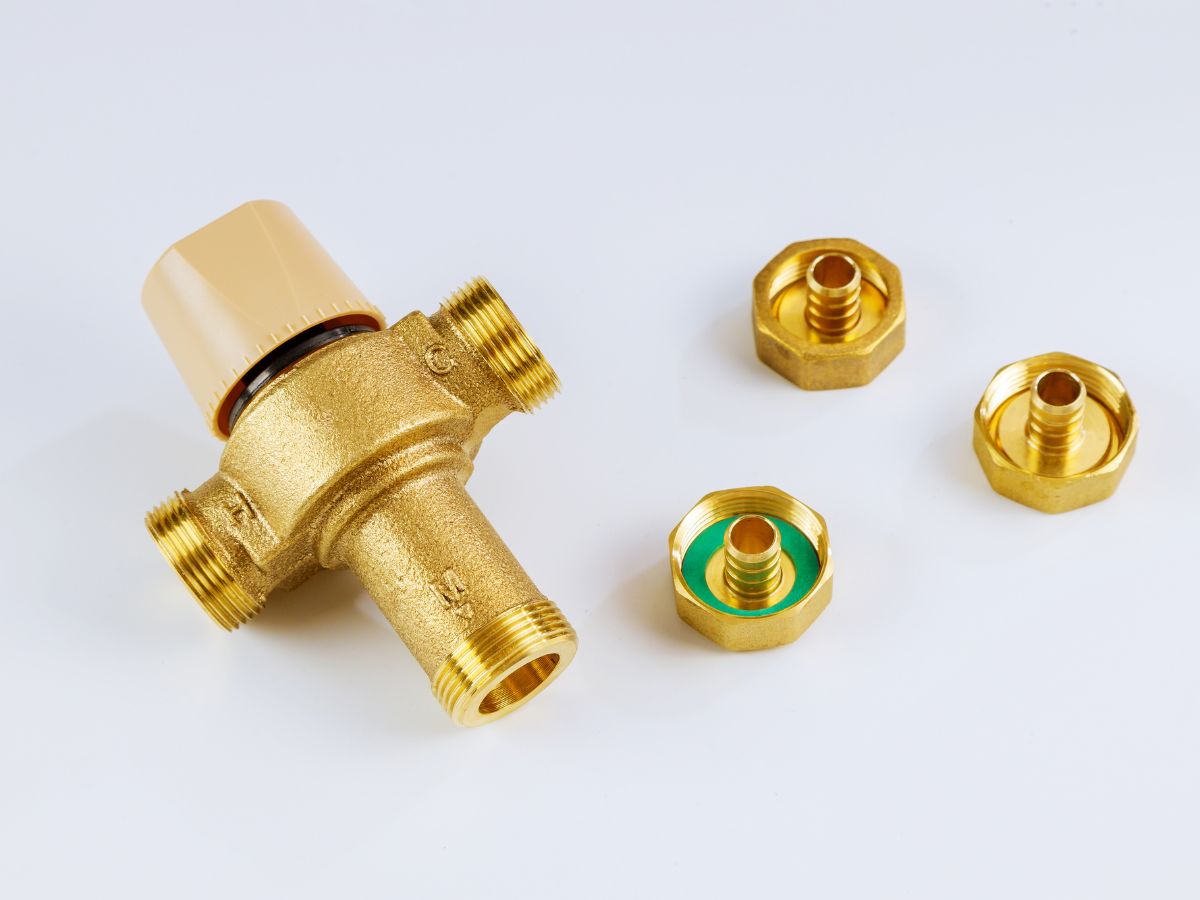Your home’s comfort relies heavily on the efficient operation of your HVAC system. While many components contribute to its performance, one often overlooked yet critical part is the expansion valve.
This unassuming component is pivotal in regulating the refrigerant (coolant) flow within your AC unit, ensuring optimal cooling and energy efficiency.
Understanding how this small but essential part functions can empower you to make informed decisions. In this guide, we’ll delve into the intricacies of these critical AC parts, explaining their role, how they work, and their impact on your system’s overall performance.
Understanding the Expansion Valve
An expansion valve is a precision component within your HVAC system’s refrigeration circuit. Its primary function is to regulate coolant flow as it moves from a high-pressure liquid state to a low-pressure vapor state. This process is essential for the cooling cycle to occur.
Imagine refrigerant as the blood of your HVAC system. As it circulates, it undergoes a series of transformations. The expansion device is responsible for one of the most critical steps: reducing the refrigerant’s pressure. When the liquid coolant passes through the valve, it experiences a sudden pressure drop, causing it to evaporate rapidly. This phase change from liquid to vapor is vital for absorbing heat from your home’s air.
The Mechanics of Refrigerant Flow
To fully grasp its function, it’s essential to understand the broader refrigeration cycle. Refrigerant, a fluid with specific properties, circulates through a closed loop within your HVAC system. This cycle involves four primary components:
- Compressor
- Condenser
- Evaporator
- Expansion valve
The compressor compresses the refrigerant, intensifying its pressure and temperature. The hot, high-pressure coolant then flows to the condenser, releasing heat into the outdoor environment and condensing into a liquid state. This liquid refrigerant enters the pressure-reducing device.
As the refrigerant passes through, it rapidly expands, causing a significant drop in pressure and temperature. The now cold, low-pressure liquid refrigerant enters the evaporator. At this point, it absorbs heat from the indoor air, evaporating into a gas. This cooled air is then circulated throughout your home by the blower fan.
Types of Expansion Valves
There are primarily two main types of pressure-reducing valves: thermostatic (TXVs) and electronic expansion valves (EEVs).
- Thermostatic (TXV): This type of valve is the most common and relies on a sensing bulb to regulate refrigerant flow. The sensing bulb acts as a measuring instrument; it measures the temperature of the refrigerant at the evaporator outlet. Based on this measurement, the TXV adjusts the valve opening to maintain the desired superheat level. Superheat is the temperature difference between the refrigerant’s boiling point and the actual temperature of the refrigerant vapor.
- Electronic (EEV): More advanced than TXVs, EEVs use electronic controls to regulate refrigerant flow. They offer greater precision and efficiency, allowing precise control over superheating and subcooling. Subcooling is the temperature difference between the saturated liquid refrigerant and the actual temperature of the liquid refrigerant.
- Diaphragm Expansion Valve: A diaphragm expansion valve is a type of metering device used in refrigeration and air conditioning systems.
The Expansion Valve and Your System’s Efficiency
The proper functioning of an expansion device is crucial for the overall efficiency of your HVAC system. When it operates correctly, it ensures optimal refrigerant flow, preventing excessive wear and tear on the compressor. Additionally, it helps maintain your home’s desired temperature and humidity levels.
A malfunctioning expansion device can lead to reduced cooling capacity, increased energy consumption, and potential damage to other components of your HVAC system. Common issues include leaks, blockages, and sensor failures.
Troubleshooting Issues
If you suspect your expansion valve is malfunctioning, you should have a professional HVAC technician diagnose and repair the problem. However, understanding the common signs of a failing valve can help you identify potential issues early on.
Some indicators include:
- Insufficient cooling
- Unusual noises coming from the HVAC system
- Increased energy consumption
- Refrigerant leaks
While replacing an expansion valve yourself is possible, leaving this task to a qualified technician is generally recommended. Improper installation can lead to further damage to your HVAC system.
How to Maintain Your Expansion Valve for Optimal Performance
While it is a critical component that often requires professional attention and protection, there are some indirect ways homeowners can contribute to its longevity and efficiency.
- Regular HVAC Maintenance: Scheduling annual HVAC maintenance is a proactive step that helps keep your entire HVAC system in optimal condition. A technician will inspect for any irregularities and address them before they become significant problems, giving you peace of mind about your system’s performance.
- Monitor Refrigerant Levels: Low refrigerant levels can put extra strain on the expansion device. Regular checks by a professional can help prevent issues.
- Filter Changes: A clogged air filter can restrict airflow and impact the overall performance of your HVAC system, including the expansion device. Change your filters more often according to the manufacturer’s recommendations.
- Mindful Usage: Avoid extreme temperature settings as they can put additional stress on the HVAC system. Consistent temperature settings can help prolong the life of your equipment.
Conclusion
The expansion valve is essential to your HVAC system’s cooling process. Understanding its function and importance can help you appreciate the technology behind your home comfort. While professionals should handle most maintenance and repairs, there are steps homeowners can take to support the health of their expansion valve indirectly.
Remember, regular HVAC maintenance is critical to ensuring optimal performance and longevity of your entire system. Contact Anderson Air for expert HVAC services and to schedule your annual tune-up.
By following these guidelines and seeking professional maintenance when needed, you can help prolong the life of your pressure-reducing device and enjoy optimal cooling performance in your home.

